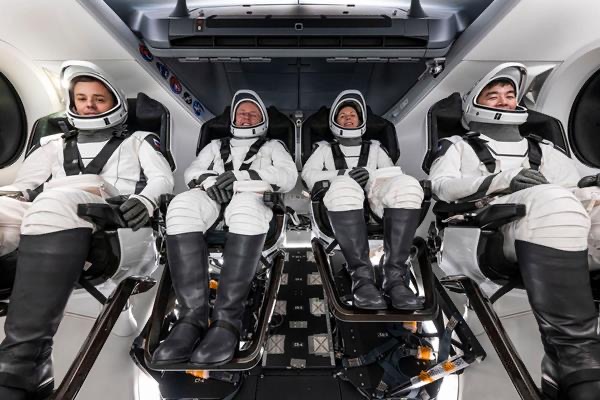U.S., Japanese, and Russian Astronauts Head to International Space Station for Lunar Landing Simulation Mission

NASA sent four astronauts to the International Space Station (ISS) on August 1 (local time) aboard a rocket provided by the space exploration company SpaceX. The spacecraft successfully arrived at the ISS and completed docking in the early morning of August 2, Eastern Time.
According to foreign media reports, at 11:42 a.m. local time on August 1, the four astronauts launched aboard the Crew Dragon spacecraft, which was carried into space by the Falcon 9 rocket from NASA’s Kennedy Space Center in Florida. The crew includes American astronauts Zena Cardman and Mike Fincke, Japanese astronaut Kimiya Yui, and Russian cosmonaut Oleg Platonov. The spacecraft completed an automated docking with the ISS at 2:27 a.m. local time on August 2.
This mission, named “Crew-11,” is the 11th rotational crew mission to the ISS under NASA’s Commercial Crew Program. The astronauts are expected to stay on the ISS for six months. During their mission, they will simulate potential landing scenarios for NASA’s Artemis lunar exploration program. Other tasks include testing vision protection strategies, observing stem cell generation and plant cell division in microgravity, and conducting various scientific experiments aimed at supporting future long-duration human deep space missions.
- 41 reads
Human Rights
Fostering a More Humane World: The 28th Eurasian Economic Summi

Conscience, Hope, and Action: Keys to Global Peace and Sustainability

Ringing FOWPAL’s Peace Bell for the World:Nobel Peace Prize Laureates’ Visions and Actions

Protecting the World’s Cultural Diversity for a Sustainable Future

Puppet Show I International Friendship Day 2020

